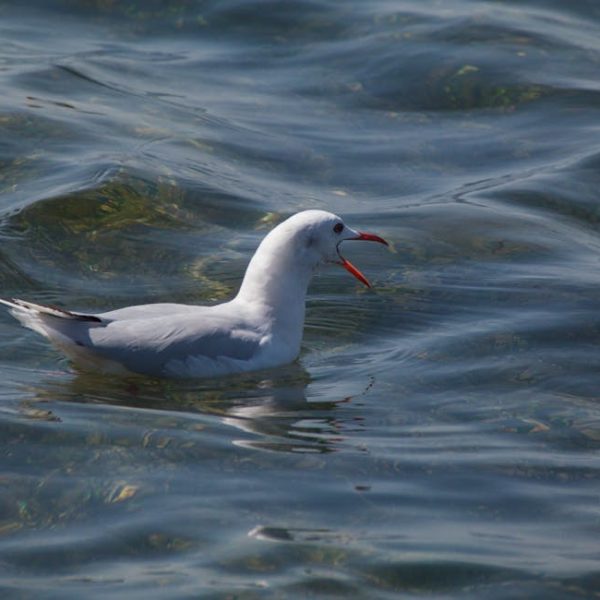Potoo birds are predominantly found in tropical regions of Central and South America. Sporting an array of incredible characteristics and behaviors, their survival is closely intertwined with the unique habitats they reside in.
Understanding the Potoo Bird
Potoo birds are special species with a unique blend of physical characteristics and behaviors that make them distinctive among other birds. They have an intriguing appearance with long, sharp bills, large eyes, and an elongated body. Their cryptic coloration, varying from a blend of grays and browns to an eerie yellow-green depending on the species, aids their famed camouflage ability.
Potoo birds have a nocturnal lifestyle and survive predominantly on a diet of insects, mastering a sit-and-wait hunting tactic. Various species such as the Northern, Long-Tailed, White-Winged, and Great Potoo each bring a unique dynamic, existing in different habitats and flaunting their camouflage expertise differently.
The Native Habitat of Potoo Birds
Potoo birds establish their homes in varied ecosystems within Central and South America. They commonly inhabit humid lowland forests, woodlands, and savannahs, showcasing their versatility. These ecosystems, with their dense foliage and countless hiding places, provide perfect grounds for their camouflage, perching, and hunting behaviors.
Unlike birds that are specific to certain types of vegetation or climatic conditions, Potoo birds show adaptability, with some species also found in dry forests and plantations.
Prime Countries to Find Potoo Birds:
- Brazil
- Uruguay
- Panama
Adaptations to Their Environment
Potoo birds exhibit fascinating adaptations that make them capable, resilient inhabitants of their specific environment. Their cryptic coloration is a form of survival tactic, helping them to hide from predators and hunt more efficiently. Their elongated body shape and large mouth are also suited for their hunting technique of catching flying insects mid-air.
While these adaptations are advantageous in their natural habitat, they do present challenges. For instance, their strong reliance on their camouflage techniques sometimes leaves them vulnerable to predators that have evolved to see past their disguises.
Migratory Habits of Potoo Birds
Unlike many bird species, Potoo birds are generally not migratory. They often prefer to remain within their established territories, where their camouflage technique serves them best. Also, their preferred diet of insects stays plentiful in their tropical habitats year-round, eliminating the need for migration. However, there might be some seasonal movements in search of better feeding grounds or nesting sites, but these are typically short-ranged.
When and Where to Observe Potoos:
Current Status and Conservation Efforts of Potoo Bird Habitats
Potoo bird populations are considered widespread, however, they are not currently listed as threatened or endangered. Nevertheless, their survival is being increasingly jeopardized due to ongoing deforestation and habitat destruction in Central and South America. Climate change, triggering unpredictable weather patterns, also poses threats.
There are several conservation efforts in place aimed at preserving Potoo bird habitats. These include projects for reforestation, stricter regulations against deforestation and illegal logging, and protected nature reserves. Organizations such as the BirdLife International and American Bird Conservancy are working tirelessly to safeguard these unique birds and their habitats.
However, human activities can harm the balance of their ecosystem. Continued deforestation, unchecked urbanization, and air pollution lead to habitat loss and fragmentation, challenging the survival of the Potoo birds. On the other hand, protective measures like habitat preservation and sustainable development initiatives have a positive impact on the conservation of these species and their habitats.
Checklist of Conservation Efforts:
- Deforestation control
- Sustainable development initiatives
- Public education about wildlife conservation
- Establishment of more protected areas and nature reserves
Key Takeaway:
- Potoo birds are found predominantly in Central and South America’s tropical regions, inhabiting various ecosystems within these regions.
- They have unique adaptations such as cryptic coloration and an elongated body, helping them survive, hunt, and protect themselves against predators.
- Contrastingly, Potoo birds are generally non-migratory, preferring to remain within a specific territory where their camouflage techniques serve them best.
- Despite being widespread, Potoo birds face challenges due to ongoing deforestation and habitat destruction, requiring conservation efforts to protect their habitats.
As we delve into the intricate world of Potoo birds, we discover the importance of preserving their unique habitats for their survival. Conservation efforts are crucial, and every individual’s responsibility goes a long way in ensuring these fascinating birds thrive in their natural abode. Let us be proactive in learning more about the world’s amazing wildlife and contribute to their conservation in our own little ways.
FAQs
Q: Are Potoo birds dangerous or harmful to humans?
A: Potoo birds are generally harmless to humans. They primarily feed on insects and prefer to avoid contact with humans or any potential threats.
Q: Do Potoo birds make nests like other bird species?
A: Potoo birds have unique nesting habits. They typically use a broken-off tree top, where they sit in plain sight during the day, using their excellent camouflage to blend in.
Q: What’s the typical lifespan of a Potoo bird in the wild?
A: The typical lifespan of a Potoo bird in the wild is not precisely known due to their elusive nature. However, in captivity, they have been known to live for around 10–15 years.
Q: Are there Potoo bird watching tours available?
A: Yes, there are bird watching tours available in the countries where Potoo birds are found, like Brazil, Uruguay, and Panama. It’s best to do some research and find a reputable tour operator.
Q: Are Potoo birds affected by plantation expansion?
A: Yes, plantation expansion can lead to habitat loss and fragmentation for Potoo birds. It’s crucial that we balance development with conservation to protect these unique species.
Share this article with your friends and explore more posts to continue learning about the fascinating world of birds.












